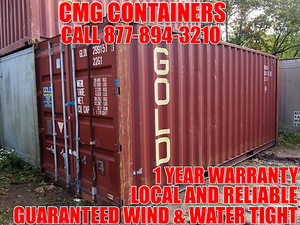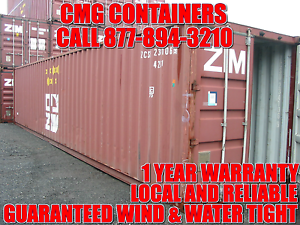Storing goods is a process that needs to be carefully analyzed and mapped by companies. Some people believe that only one place to store the products is needed, but the storage goes far beyond that. It is one of the fundamental pieces in the logistics process, contributing to the proper functioning of the chain. There are several factors that must be considered at the time of storage. With that in mind, here are the most important tips for storing your goods in the best way possible. The use of Tiger Containers happens to be essential here.
Arrange goods in and out

The important thing in a warehousing system is to control the entry and exit of all products in stock. Ideally, you should invest in inventory management software that enables you to perform this control in a more automated manner. However, there are cases of companies that do not have a system because they find the investment high. In such cases, it is recommended to perform control in excel spreadsheets.
All data related to the product should be entered in the document, such as registration of the item with the proper characteristics, the quantity stored, date of entry, address where the item will be stored. Subsequently, when the goods leave, the quantity must be written off, with the date of departure recorded.
Choose the Containers
One of the key items in storing goods is making a good choice of Containers. It is natural in logistics processes that container is handled several times in distribution, handling, storage and transport. Primary containers are those that involve the product. Secondary containers are those that protect the primary, widely used in the storage of goods.
When the container is of good quality, it prevents product malfunctions, aids in sorting and identification, and optimizes storage space. Palletizing is currently very common in most warehouses, as it facilitates the handling of goods in large quantities and brings the speed of operation, among other benefits.
Choose an appropriate infrastructure
The location chosen for storing your goods should have all the infrastructure necessary for the efficient flow of operations.
Here are some things to consider when choosing a warehouse:
- High ceilings: this is necessary due to the pallet structures and if you need to expand the space in the future you can install mezzanines.
- Weight-resistant floors of materials.
- Properly lit environment: efficiently and economically.
- Security controls: site must-have cameras and is monitored 24 hours a day for theft prevention.
- Fire detection systems.
- Covered loading and unloading docks with leveling platform.
Position materials correctly
When operating a warehouse, the manager needs to be concerned with the agility of the processes, especially on peak days. As a result, the goods need to be stored in the correct place for easy location.
Thus, the warehouses use the classification through the ABC curve, where: the materials with the highest rotation (A) are close to the entrance and exit of the warehouse, to gain speed at the time of dispatch, the materials with the average rotation (B) they are in an intermediate position and the materials with low rotation (C) are further away, as they will not be moved as often.

